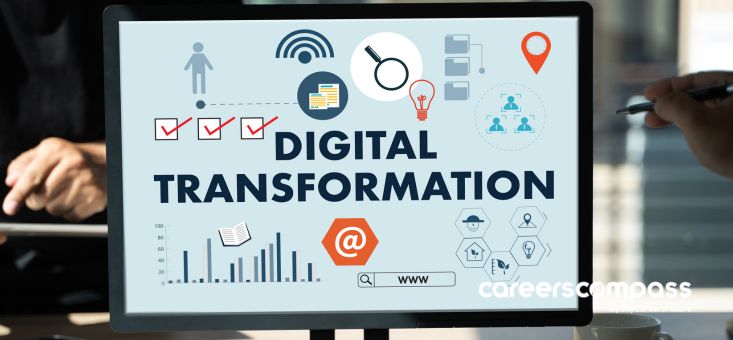Showing off your digital fluency to potential employers’ matters, especially in the current competitive job market.
Sometimes, you might have experience working at your current and previous jobs with certain digital skillsets or initiatives.
But if you don’t explain them clearly in the terms applicant tracking systems (ATS) or hiring managers can pick up quickly, you might miss out on job opportunities.
Here’s a list below of several common digital skills, tools and organisational buzzwords worth learning if you don’t know them already.
There are over 100,000 jobs available on MyCareersFuture. Apply for your next job role here!
What is an analytics dashboard?
These are digital tools that pull data from various sources and present them in easy visual formats to present answers, insights and patterns related to the requirements of the job.
Commonly used in digital customer journeys and automated tasks, they keep an eye on various business and operational metrics, ranging from web traffic, customer engagement, or conversion rates to leads or sales.
What is a digital transformation roadmap?
Commonly seen and heard in companies that are making medium and long-term digitalisation plans, these explain to both employees and external partners and customers how and what digital initiatives are being taken to stay relevant.
This can range from changing business models to moving operations towards digital-first methods.
What is low-code and no-code?
These refer to digital applications that require little or no coding to create and offer features such as simply drag and drop, and what you see is what you get (WYSIWYG) interfaces. These are popular with companies or small or medium business enterprises (SMEs) that are looking to start simple digital customer solutions without needing software developers.
They are commonly linked to cloud-based software services known as aPaaS (Application Platform as a Service), which charge a recurring fee to manage low-code or no-code applications, keeping costs lower.
These can be linked to another term, MVP (Minimum Viable Product), which is to create a basic application or service that has just enough features for pre-market customers or users to get feedback for a better version further down the line.
MVPs aim to save time and budget and are usually done ahead of an MMP (Minimal Marketable Product), which will represent a solution that’s closer aligned to the ultimate digital solution.
What is Business Process Automation (BPA)?
These are ways companies simplify business processes that involve manual, repetitive tasks with automated solutions. They are usually designed to help employees free up time for other, more important tasks, when routine work is more easily completed with the help of such BPAs. This also reduces the risk of human error for processes that require data entry.
BPA is usually linked to another popular term, decision automation, which is the use of artificial intelligence, data, or business rules to help companies in day-to-day decision-making, to increase productivity and reduce the risk and mistakes in decisions by employees.
They can also be linked to Robotic Process Automation (RPA), which helps with tasks such as generating receipts every time a payment is recorded and sending them out to emails automatically.
What is Case Management Software?
These are digital tools that companies use to speed up their processes by removing tedious forms or complicated procedures and are usually used for customer-facing departments.
They also help organise, analyse and share all the information related to particular customers easily for other departments to follow up.
These can be linked to Customer Relationship Management (CRM) software, which is designed to optimise the process of communicating and managing customers by providing a centralised digital solution and a central point for receiving, processing and sending data.
An example of a commercial software provider that does this is Salesforce, which is cloud-based and provides sales and marketing teams with a unified platform to reach out to customers and clients effectively.
What are Digital Assets?
These are content or documentation that have value to the company and are recorded, saved or stored digitally. Examples of these include photos, videos, documents, and audio recordings.
What are Document Generation Software?
These are document templates that can be automatically populated with information from various data sources to create other process-related documentation, such as proposals, quotes, purchase orders, invoices, contracts, or reports.
What is User Acceptance Criteria/Testing (UAT)?
These are done when a company launches new digital tools and systems and wants to test whether they cover all the functionalities that customers or users will expect.
Usually, user stories or journeys will be created with clear descriptions of user requirements, and all possibilities will be tested to ensure the tool or platform is ready for launch and fit for purpose.
What is Gamification?
This is the inclusion of game-like elements into non-gaming digital tools. The goal is to increase retention and engagement by users and can be seen in progress/completion bars, quizzes, or pop-up competitions or forms.















